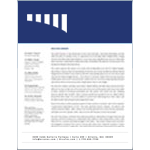
U.S. Economic News
July 10, 2017
U.S. News
Paul Hannon and David Harrison of the Wall Street Journal write that as central bankers around the world begin to tighten monetary policy, inflation has been falling. Despite nearly a decade of loose monetary policy, many G20 nations face weak inflation, bringing into question the traditional link between healthy economies and rising prices. WSJ
The Financial Times reports that the U.S. auto industry faces both declining sales and employment, undermining much of the sector’s recovery since the recent recession. The authors point to the exhaustion of “pent-up demand” from the recession and the rise of ride-hailing apps as two factors contributing to the decline. FT
The Wall Street Journal reports that leading indicators from the OECD suggest that growth in the U.S. this year may be weaker than previously expected. The fading possibility of substantial tax reform or infrastructure spending occurring in 2017 has driven the downward revisions to OECD projections for the U.S. WSJ